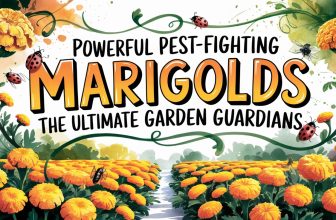Lavish Your Garden with These Lovely Flower Names that Start with L

When it comes to flower names that start with the letter L, there are a variety of options to choose from. Whether you are looking for a unique flower name for a special occasion or simply want to learn more about the world of flowers, this article will provide you with all the information you need. From lilacs to lupines and leucadendrons, there are plenty of flower names that begin with the letter L.
Table of Contents
ToggleLiatris

Liatris is a stunning genus of perennial flowers that belongs to the Asteraceae family. Commonly known as Blazing Stars or Gayfeathers, these beautiful flowers are native to North America and can be found growing in a wide range of habitats, from meadows and prairies to woodlands and swamps.
The most striking feature of Liatris is its tall, slender stem that can grow up to 5 feet in height, making it an excellent choice for gardeners looking to add height and drama to their flower beds. The stem is topped with a long spike of tiny, fluffy flowers in shades of pink, purple, and white, which bloom in late summer and early fall.
Lavandula Angustifolia
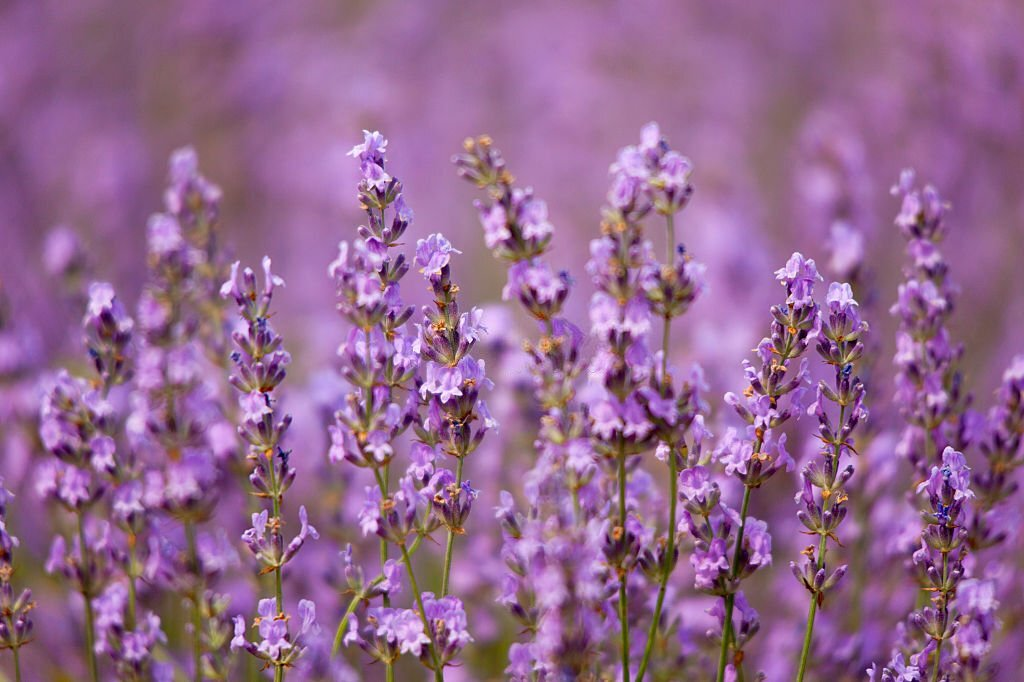
Undoubtedly, Lavandula angustifolia is one of the most popular herbaceous plants. Its beautiful purple blossoms cover several window sills, gardens, and balconies. Lavandula flowers between late May and mid-September, on average. There, it produces purple flowers, occasionally white ones, grouped in pseudo-whorls.
Lilac
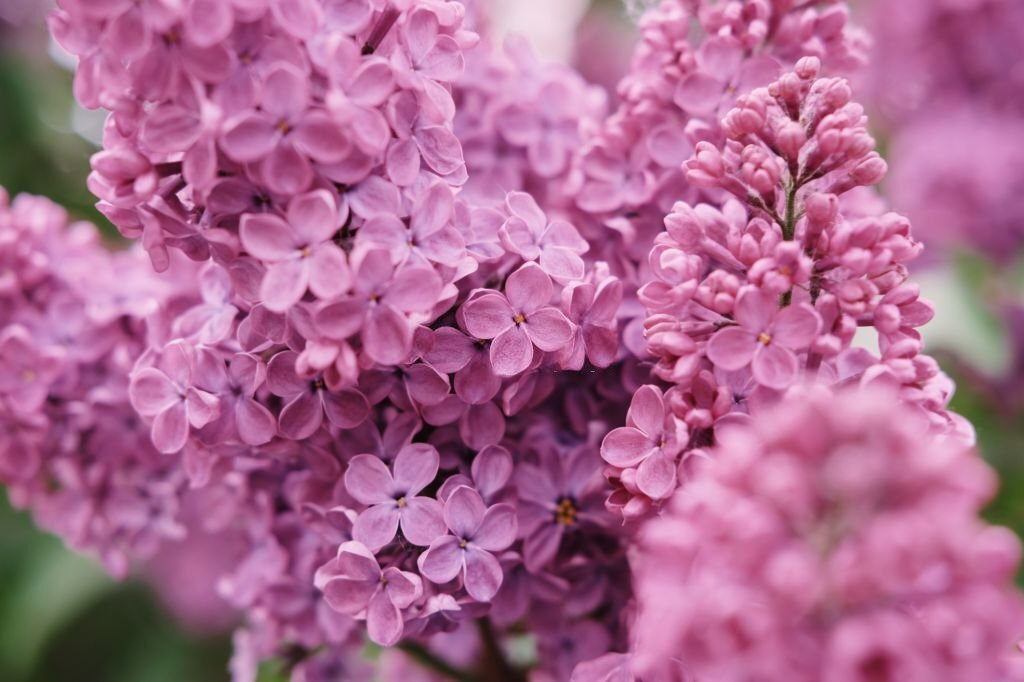
Lilacs (Syringa vulgaris) are attractive shrubs in many gardens because of their purple flower clusters and sweet fragrance. And with sizes ranging from dwarf kinds under three feet tall to small trees, they can fit practically everywhere.
Lilac flowers come in a variety of colors, including shades of purple, pink, and white. The blooms are typically arranged in large, cone-shaped clusters that bloom in the spring. They are beautiful and fragnant flowers and their scent can be enjoyed from a distance. Lilac is also valued for its foliage, which is typically green, but can sometimes be variegated or yellow.
Lathyrus Odoratus
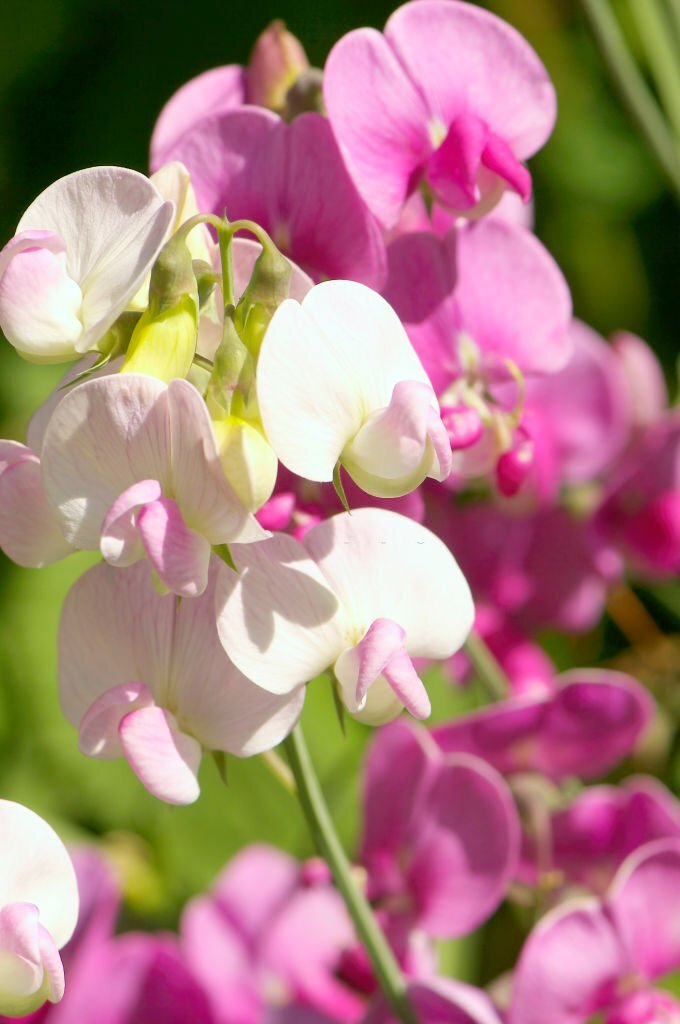
Lathyrus odoratus is an annual flowering plant used for its fragrant and visually appealing blossoms. They are sometimes put in bouquets or used to offer a dash of color to home gardens. Species of plants feature purple blooms, but many cultivars now offer additional flower colors, such as white, lavender, blue, red, pink, and bicolor.
Lotus
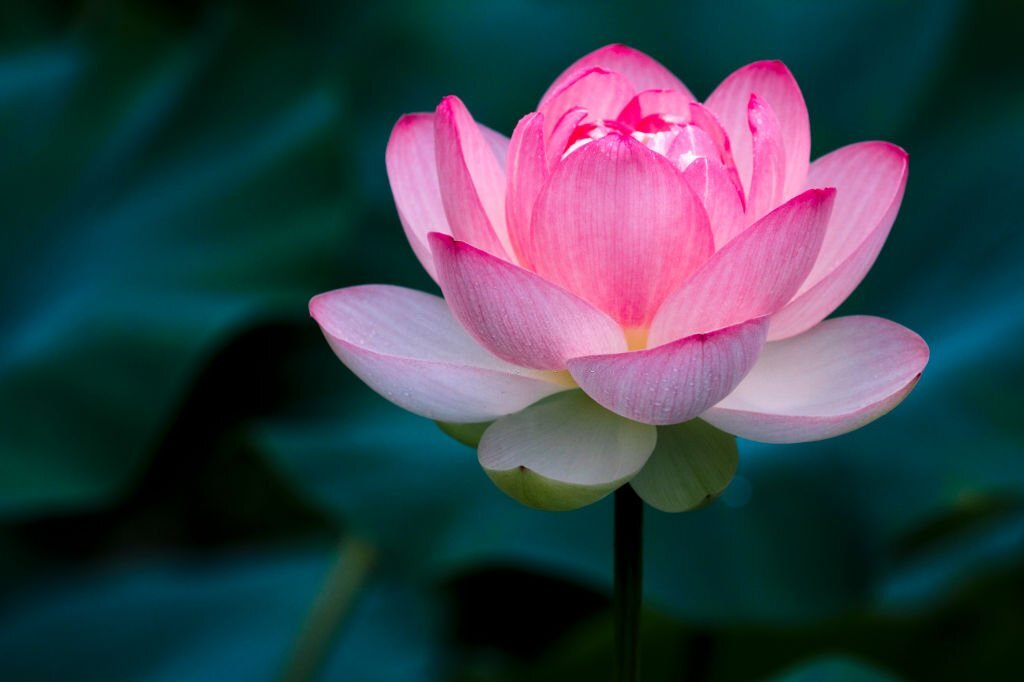
Accidently referred to as a Water lily, the Lotus flower (Nelumbo nucifera) is a perennial plant native to India. It can grow totally submerged, including its blooms, in marshy regions. This beautiful aquatic bloom is surprisingly simple to cultivate. Although short-lived, the blossoms make the most of their brief existence by blooming up to 12 inches wide with layers of exquisite pink to white petals. Large, attractive seed pods follow, and the bluish-green, waxy leaves can attain a diameter of up to two feet. Lotus tubers may be planted directly on the bottom of a pond or, to prevent invasive growth, in pots lowered into the water.
Lady’s Mantle

The perennial plant Lady’s mantle (Alchemilla mollis or Alchemilla vulgaris) is lovely. Its velvety gray-green foliage has scalloped, semi-round leaves. The plant produces almost unnoticeable chartreuse (yellow-green) flowers in late spring and early summer. Lady’s mantle is a well-liked cut flower.
Lady’s mantle is considered to have healing, tonic, and astringent characteristics, which explains why it has been utilized for generations in traditional medicine. It continues to be widely employed in herbal medicine The common name for Lady’s Mantle is Alchemilla vulgaris.
Lemon
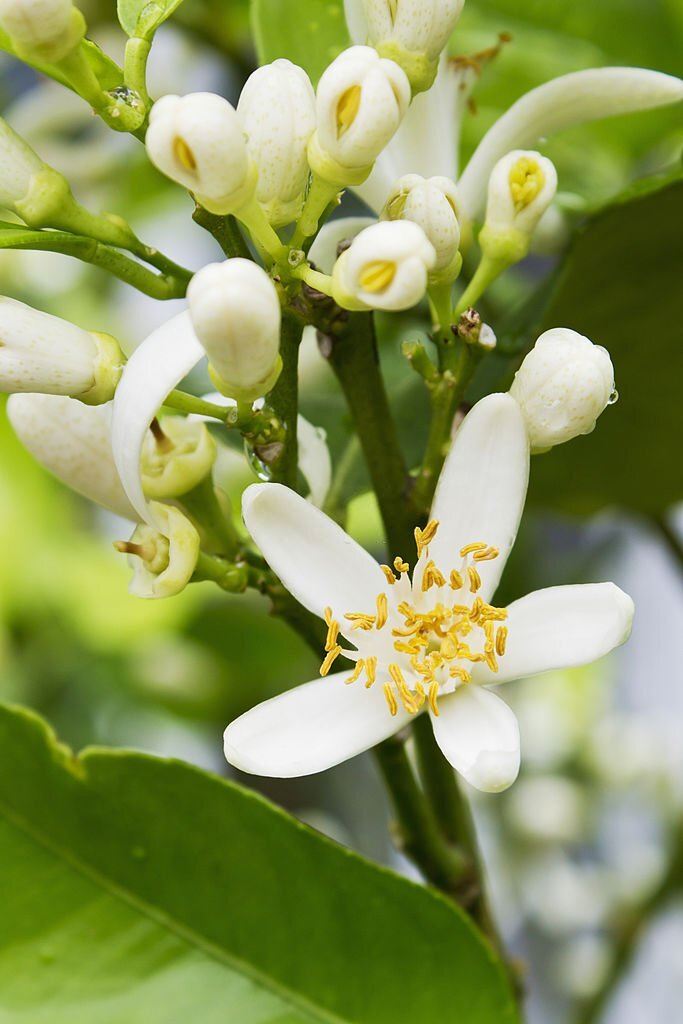
Lemon (Citrus limon) is a Citrus hybrid and the popular edible fruit of this small, sprawling tree or shrub. The somewhat scented blossoms may be solitary or have two or more petals. The opened flowers feature four or five white petals and a purple underside.
Lilium
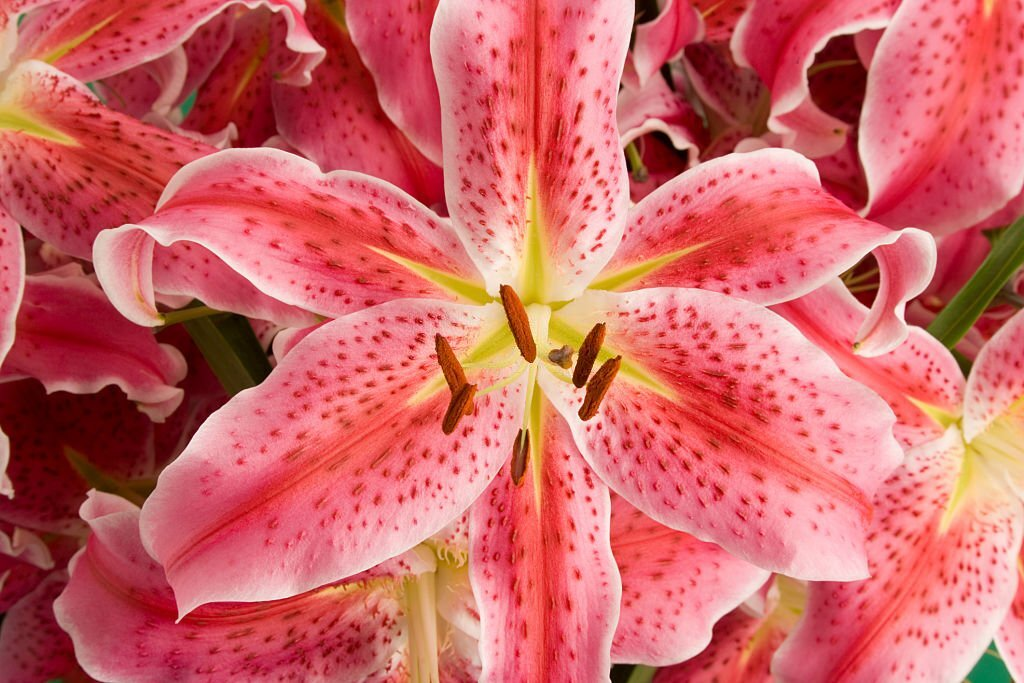
Lilium is a genus of bulbous perennials cultivated for its highly decorative and frequently fragrant flowers. There are four primary floral shapes among the 100 species: trumpet, bowl, recurved, and funnel. From spring until fall, wide varieties of lilies bloom, giving rise to the names early season, midseason, and late season.
The lily plant is a beautiful perennial that grows from bulbs and is renowned for its huge, conspicuous blossoms. As a result, they have a reputation for attracting butterflies and bees to the garden. Lilies are the well-liked flowers for numerous reasons. They are simple to cultivate, available in a variety of hues, and have a lengthy vase life.
Love Lies Bleeding
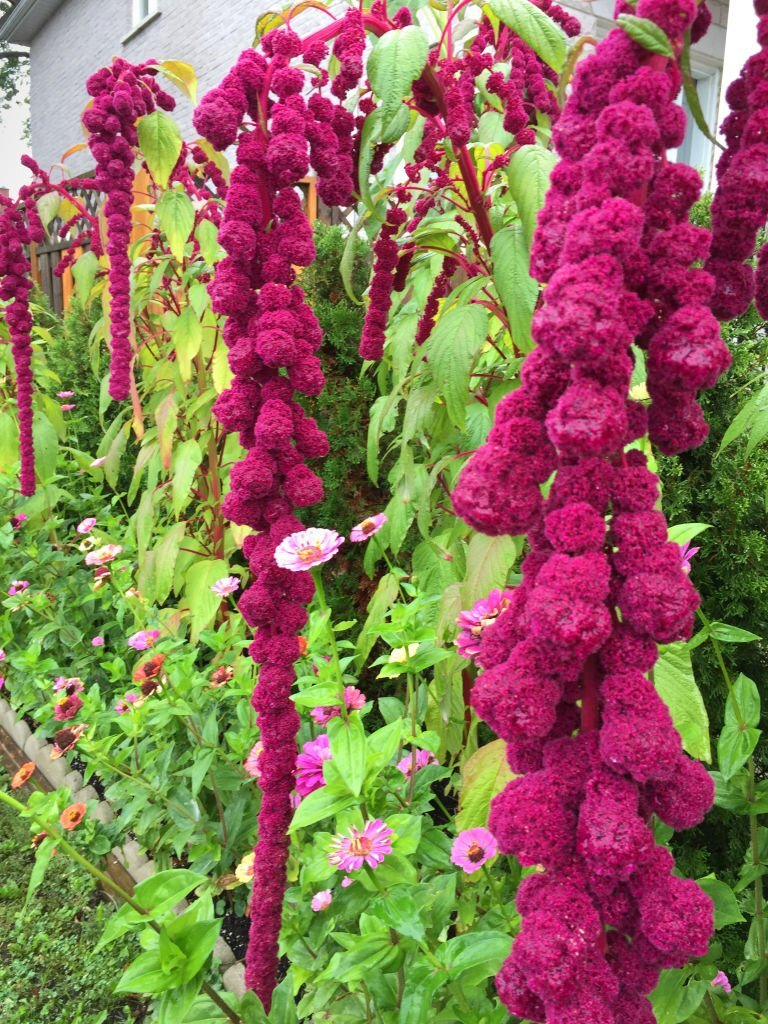
Love lies bleeding (Amaranthus caudatus), also known as the tassel flower, produces rich red, cascading panicles against lovely pale-green leaves. This decorative amaranth variety can reach a height of five feet and requires minimal maintenance once established.
This decorative amaranth variety can reach a height of five feet and requires minimal maintenance once established. Not only is love lies bleeding drought-resistant, but it also flowers longer and more vigorously in poor soil. Plants grown in direct sunlight are the healthiest. In some regions, Amaranthus caudatus can become invasive, therefore, take great care to remove the seed heads before the plant self-sows.
Love in a Mist
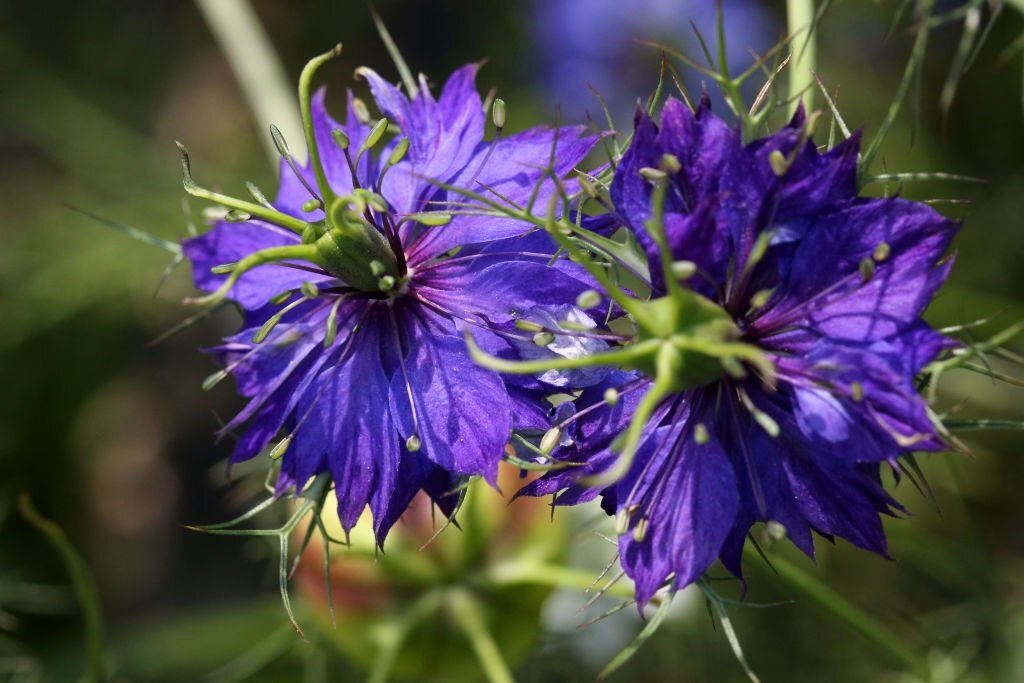
Love in a Mist or Nigella damascena is an old-fashioned flower that was once native to Europe but now grows all over the world. Its name comes from its appearance when blooming: small petals cover a misty-looking center. Nigella damascena bears both pink and purple flowers, making it an especially attractive choice for gardens. Love in a Mist is also easy to grow in sunny areas with well-draining soil – perfect for gardeners who want beautiful results without too much effort!
Lily of the Valley

The Lily-of-the-valley (Convallaria majalis) The delicate, light, bell-shaped flowers of Lily-of-the-valley that dangle above their green leaves evoke visions of dancing fairies. Despite its diminutive size, this plant has a very potent fragrance and spreads rapidly to form an efficient ground cover (though it can grow invasive).
Lady’s Eardrops
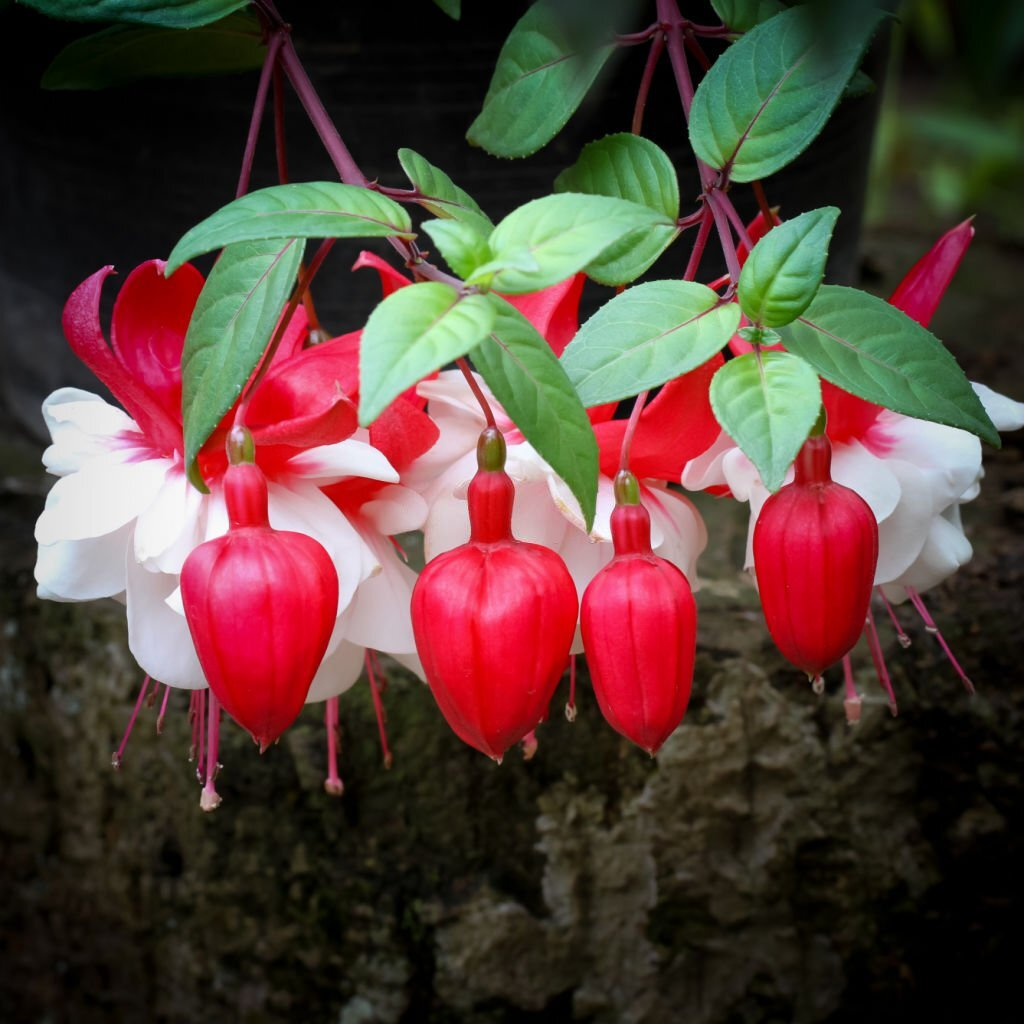
Lady’s eardrops, or fuchsia, bloom in a vibrant array of colors from deep purple to red and pale pink.
Lunaria
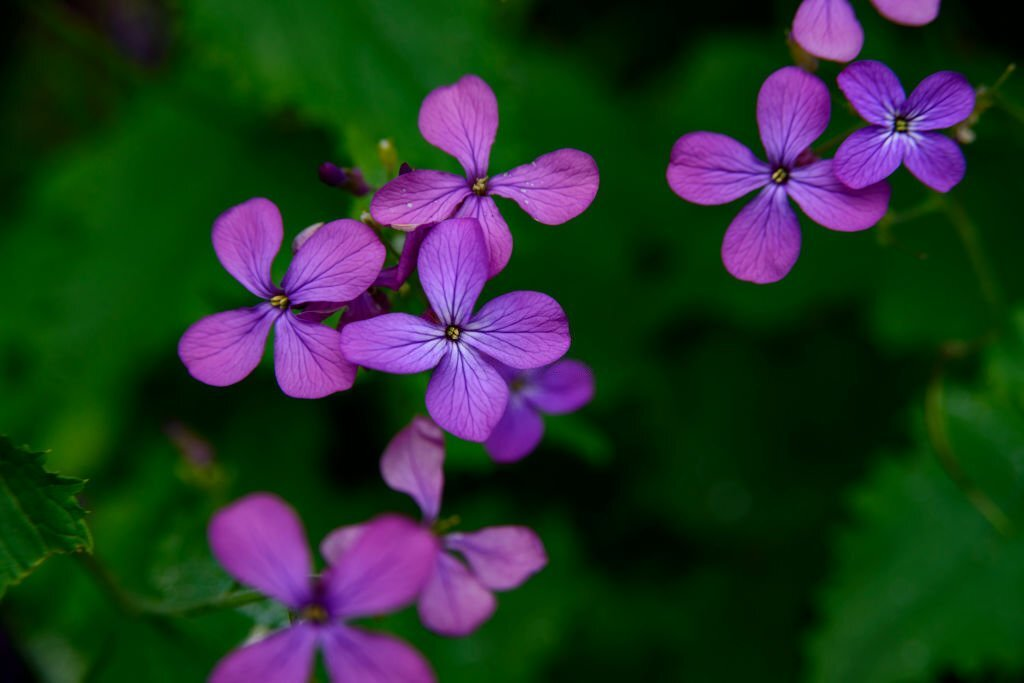
Lunaria (Money Plant) is a type of flower that blooms in pink, white and purple colors and has papery round seed pods which turn from green to brown as they mature. The plant blooms in early spring up until early summer and can tolerate most soils, even clay soil! This type of flower looks great when planted in mass groupings or as borders along pathways. After seeds are sowed, plants produce clusters of lavender flowers in the spring and pods in the second summer. These coin-shaped pods make the plant appealing in dried arrangements.
Lythrum Salicaria

Lythrum salicaria (Purple loosestrife) is a member of the Lythraceae family of flowering plants. There are around 150 species of evergreen and herbaceous perennials in this huge plant family. On the stem, the sessile leaves are alternating or opposite. The inflorescence of purple loosestrife consists of racemes with numerous spectacular white, magenta, or reddish-purple flowers.
Leopard Plant

The Leopard plant or Ligularia dentata is another floral beauty beginning with L that is sure to be a conversation starter in your garden or living room. This exotic tropical plant produces small yellow flowers surrounded by large leaves patterned like a leopard’s coat – hence the name! It prefers medium to wet soil. Ligularia dentata thrives in moist soil and partial shade, although it can also tolerate full sun if given adequate moisture. This hardy plant is easy to care for and can be propagated from division or by seed.
Large Fothergilla
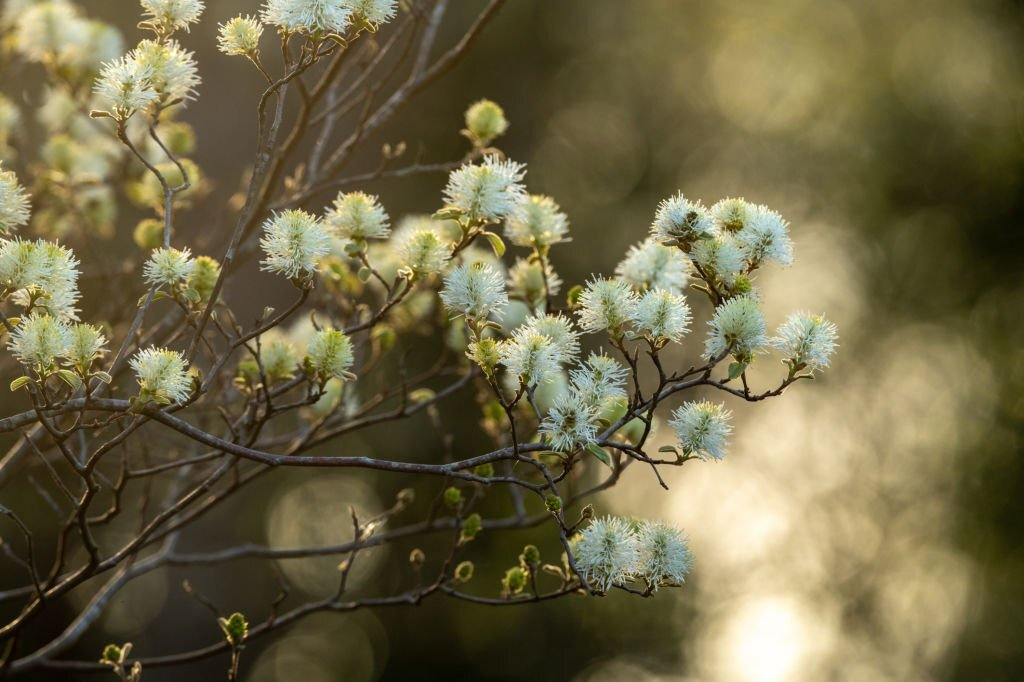
Flower names that start with the letter L are plentiful and varied. One of the most unique is the Large fothergilla, a small flowering shrub native to North America. This deciduous shrub produces white bottlebrush-like flowers with numerous stamens in early spring before its foliage appears. It forms a flat-topped mound or oval shape up to 8 feet tall and wide, making it an ideal addition to landscape borders and foundations. Seasonally, the Large fothergilla flowers are red, orange, or yellow. It grows slowly but can endure both drought and wet conditions, giving it a versatile addition to any garden.
Lemon Balm
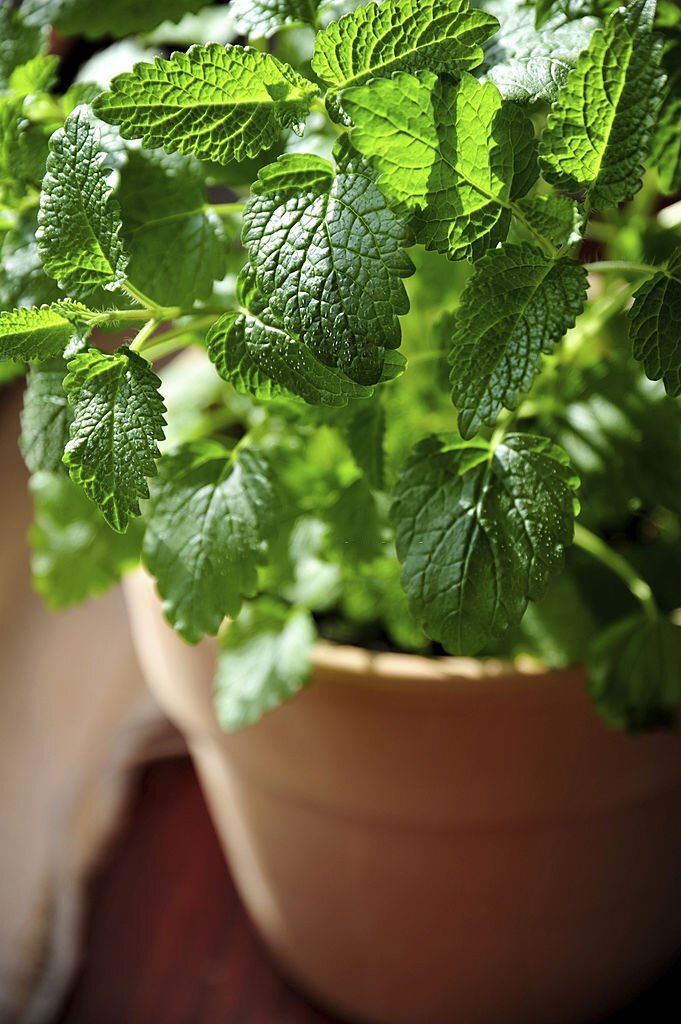
Lemon balm (Melissa officinalis) is an indispensable culinary and therapeutic herbaceous plant for every balcony or garden. Lemon balm, or simply lemon balm, belongs to the family Lamiaceae. Melissa officinalis is indigenous to Europe, North Africa, and West Asia, although it is cultivated worldwide.
Lantana

Lantana plants are simple to grow and require minimal maintenance. While they prefer full sun, they can withstand partial shade and moderate drought. Lantana can be cultivated in containers or as a groundcover on the patio. However, they are also excellent filler plants for hanging baskets, where their blossoms can overflow over the edge.
Leadwort

This lovely, hardy perennial always merits a spot in a home garden, despite its unflattering common name. The terminal clusters of five-petaled gentian blue flowers (half to three-quarters of an inch in diameter) develop on the leaf from summer till frost over a lengthy flowering period.
Laurel
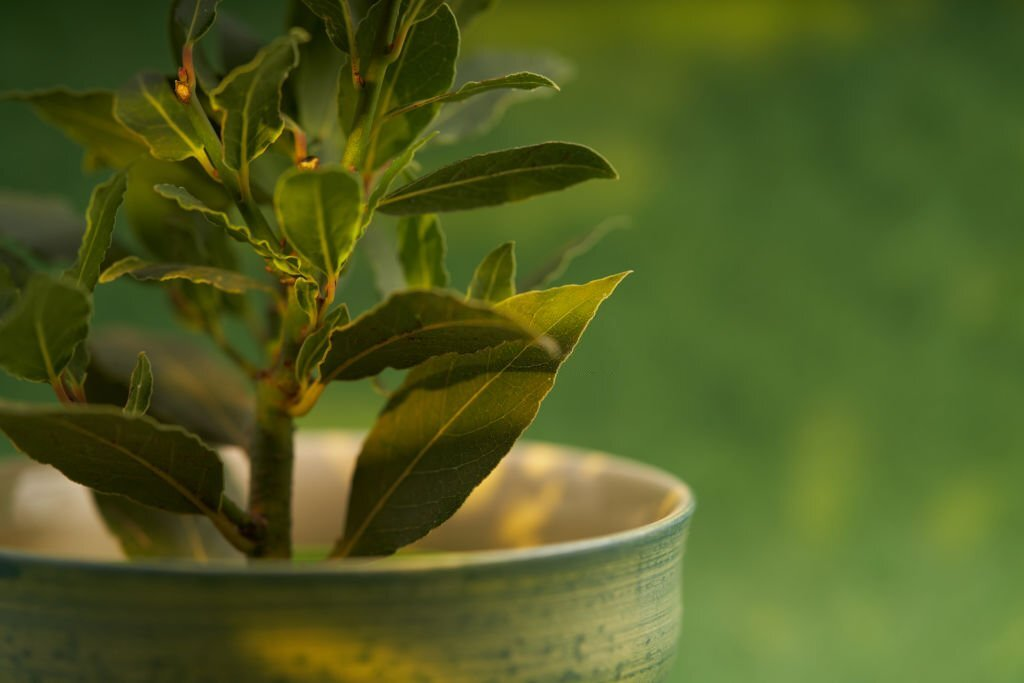
Laurus nobilis is one of the most historically significant trees. Originating in the Mediterranean region, it is a well-known emblem of dignity and power. The little, unremarkable flowers of a greenish-white or yellowish hue.
Larkspur

Growing in tall spires, the blue (and sometimes pink) blossoms of Larkspur (Consolida ajacis) make great-cut flowers. This popular cottage garden plant also rapidly self-seeds to delight the garden each spring and summer with airy foliage and stunning tones of blue. Plant Larkspur in full sun and well-draining soil. Providing consistent moisture and removing spent blossoms will promote abundant flowering.
Lisianthus
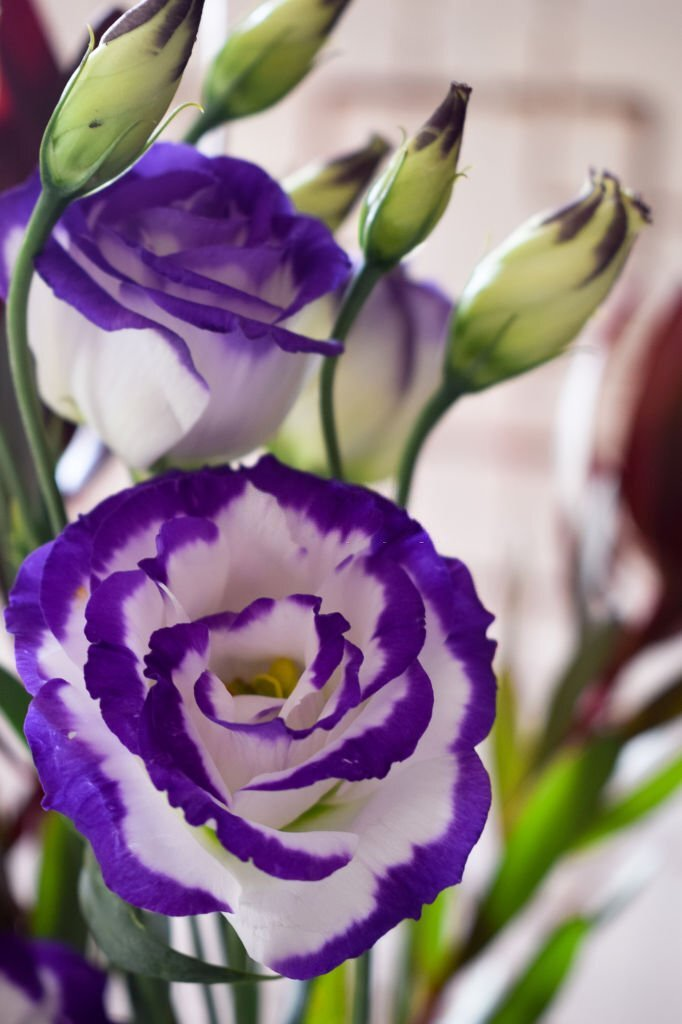
Lisianthus plants are well-known for their beautiful, multicolored flowers that are attractive even when not in bloom. Because Lisianthus blooms typically survive around 10 days, they are popular as cut flowers. The shrub produces huge purple flowers with a droopy appearance.
Lady’s Slipper

Perhaps the most iconic of all flowers that begin with L is the Lady’s slipper (or Cypripedium). This beautiful bloom is known for its distinctive pouch shape and delicate petals in shades of pink and white. It symbolizes humility and gratitude, which makes it perfect as a romantic gift or as an addition to any garden. Not only does this flower look amazing, but it also has some interesting properties – it can take up to seven years for one plant to produce a single bloom!
Leucadendron
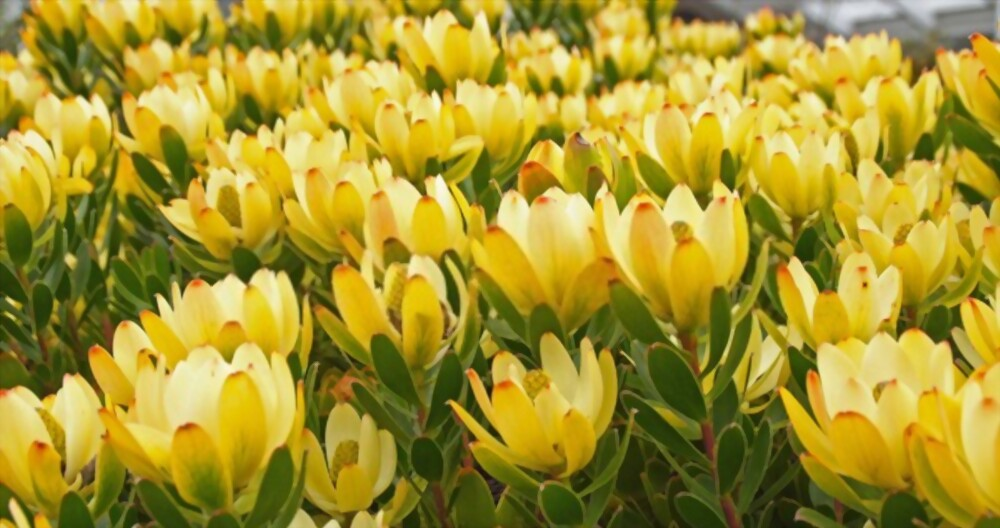
Leucadendron is a genus of evergreen shrubs and small trees that is native to South Africa. These plants are known for their unique, colorful flowers, which are made up of small, densely packed clusters of bracts that surround the true flowers. The bracts come in a wide range of colors, including pink, red, yellow, and green, and can be used as cut flowers and floral displays.
Leucadendron plants prefer well-draining soil and full sun, and they are highly drought-tolerant once established. They are often used in xeriscaping and other water-wise gardening practices, as they require very little water once they are established.
Leucadendron plants are a great choice for gardeners who are looking to add color and texture to their landscape. They are relatively easy to care for, and their unique flowers are sure to be a conversation starter. If you live in a hot, dry climate and are looking for a drought-tolerant plant that will add some interest to your garden, consider adding a Leucadendron to your landscape.
Lenten Rose

Named for its bloom time, Lenten rose (Helleborus x hybridus) flowers in late winter to early spring, its cup-shaped blossoms emerging to welcome spring even with snow still blanketing the ground. The lovely sepals, which are frequently mistaken for petals, are typically white or lavender, and the evergreen foliage lends year-round appeal.
Lysimachia Vulgaris
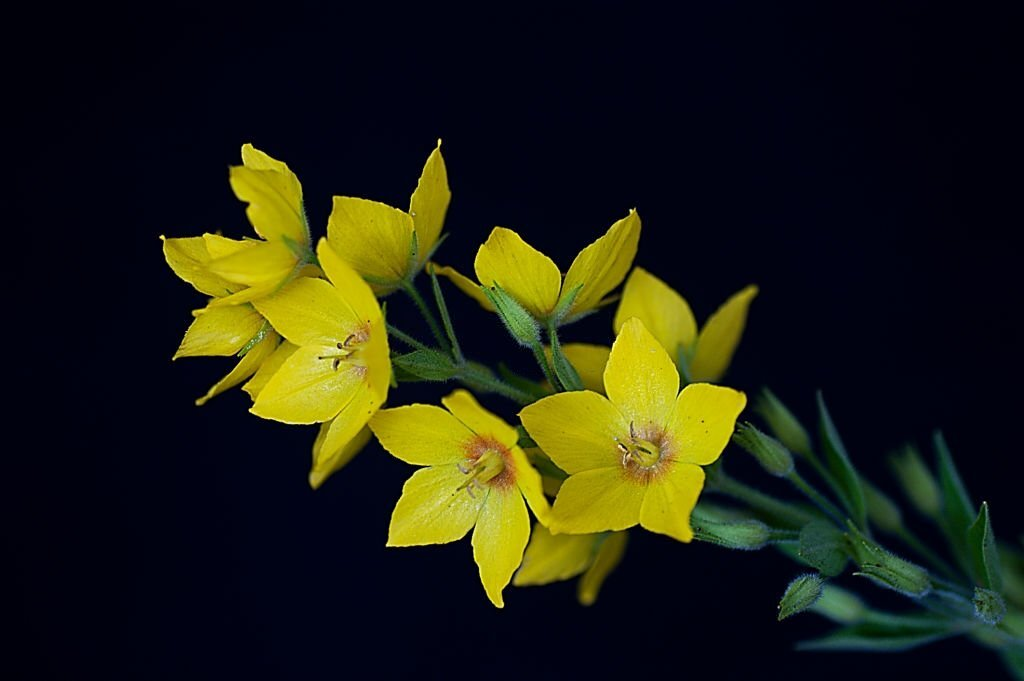
Also known as garden loosestrife, this perennial wildflower is native to Europe, Asia and parts of North America. Its daisy-like yellow flowers have a sweet aroma that blooms from July to August, making it a great addition to any summer garden. It prefers full sun or partial shade and moist soil in order for it to thrive.
Lysimachia vulgaris can spread quickly once established so regular maintenance is key in controlling its growth. Deadheading spent blooms helps ensure continuous flowering throughout the season, while pruning back overgrown plants can help prevent overcrowding in your flower bed. Additionally, it’s important to divide them every two or three years as part of their ongoing care regimen as well.
Lily of the Incas
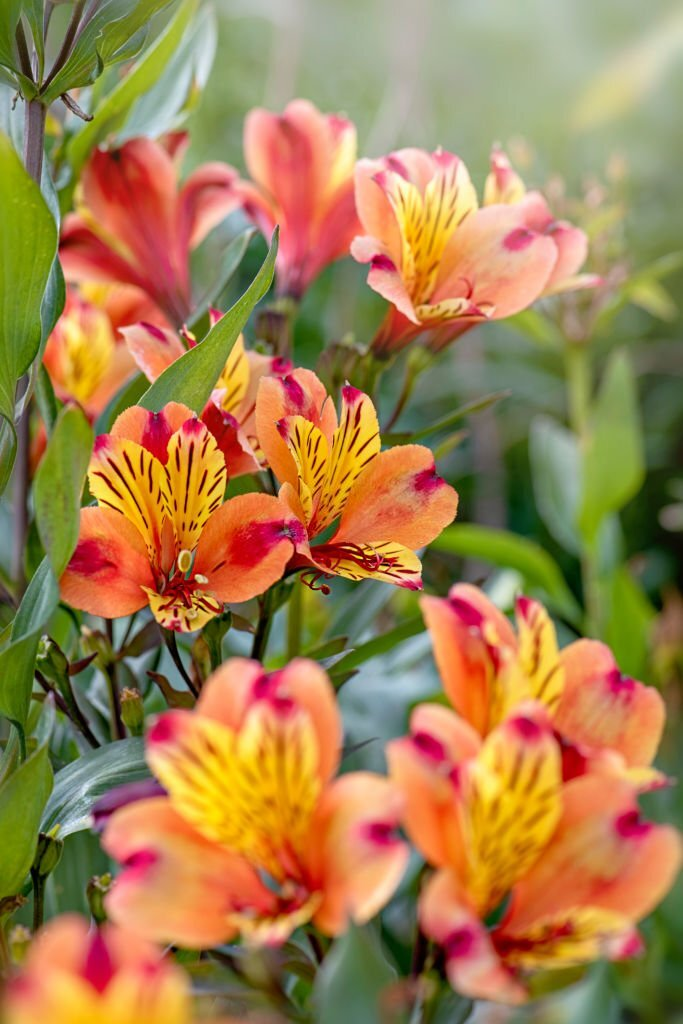
If you are looking for a flower name beginning with the letter L, then you may find one that is perfect for your garden or home décor. The Lily of the Incas is an excellent example of flowering plants starting with L. This stunning species can be found in South America, where it has been used as a symbol of beauty and love since ancient times.
It features bell-shaped petals in shades ranging from white to yellow, pink, purple, blue and even red. The exquisite aroma of these plants makes them great for use in perfumes or aromatherapy products too! With its hardiness and long-lasting blooms, this lily is definitely worth adding to any garden or interior decorating project.
Larch
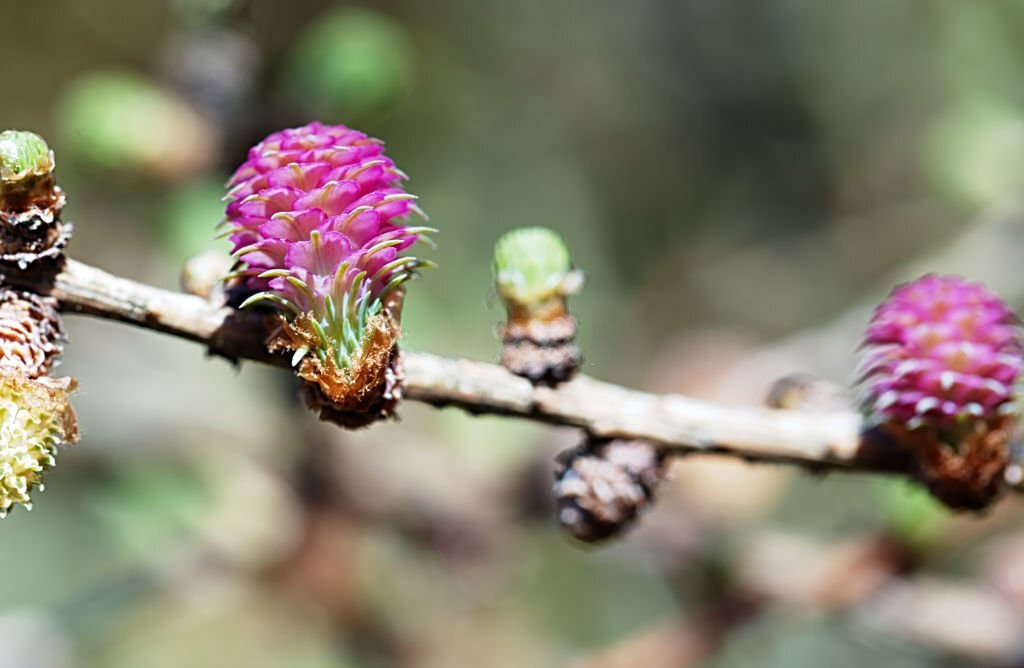
There are pink flowers nestled amongst the needles that will eventually develop into cones. The cones are initially yellow or red and turn brown towards maturation. Moreover, Larch is a Bach flower treatment for poor self-esteem. It can be utilized to boost your self-esteem and confidence in your talents.
Liquorice
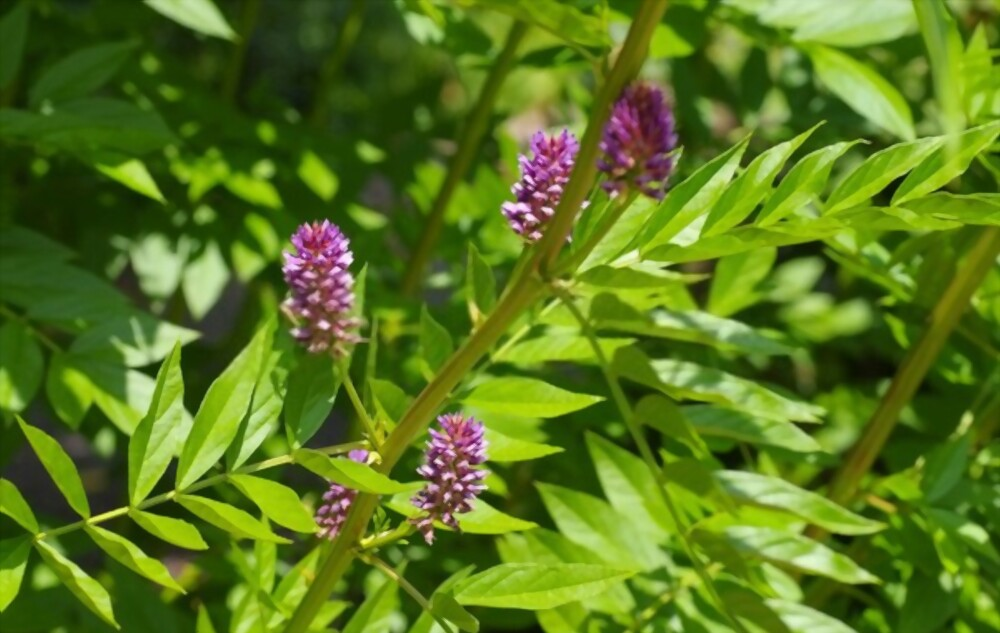
Liquorice or licorice is the popular name for Glycyrrhiza glabra, a flowering plant of the bean family Fabaceae, the root of which can be used to extract a sweet, aromatic flavoring. Liquorice is a perennial herbaceous legume indigenous to Western Asia and southern Europe.
Lobelia

Flower names that begin with L are abundant, giving gardeners and floral designers a plethora of lovely blooms to choose from. One such flower is the Lobelia, a versatile plant that has become increasingly popular in recent years due to its impressive range of colors and varieties. Whether you’re looking for something small and delicate or grand and vibrant, a Lobelia is sure to fit the bill. Plant in rich, moist to wet soil in a location that receives full to part sun.
FAQ
✅What is the rarest flower name beginning with l?
The rarest flower name beginning with L is the Lady Slipper Orchid. This stunningly beautiful orchid is native to North America and Europe, but is becoming increasingly difficult to find in the wild due to over picking and habitat destruction. Despite its rarity, it remains one of the most sought-after specimens by both professional and amateur botanists alike.
✅What is the annual flowering plant beginning with l?
The annual flowering plant beginning with L is the Lantana Camara, a genus of over 150 species of perennial shrubs and small trees. Native to tropical regions of the Americas, as well as Africa and Australia, this flowering plant features a cluster of brightly colored blooms in shades of pink, purple, white, yellow and orange. The flowers from this species are typically used for ornamental purposes in gardens around the world.
✅What are the purple flowers beginning with l?
Purple flowers are a popular choice for flower gardens and landscaping, but if you want to find one that begins with the letter L, there are quite a few options! From lavender to lupines, these purple blooms can be found in many different shapes and sizes. The most popular purple flower beginning with L is likely lavender. This fragrant herb is known for its calming aroma and versatile uses in cooking, aromatherapy, and healing remedies. Lavender comes in various shades of purple, ranging from light lilac to deep violet.
✅What are the lovely flowers beginning with l?
When it comes to adding beauty and color to any outdoor or indoor space, there are many lovely flowers beginning with the letter L. Lavender, larkspur and lilies of the valley are just a few examples. Whether for special occasions or everyday enjoyment, these blooms will surely add that touch of elegance.
Disclaimer: GardeningNorm is a participant in the Amazon Services LLC Associates Program and may receive a commission if you purchase a product via a link on this page.. However, this does not impact our reviews.Read the full disclosure here.


